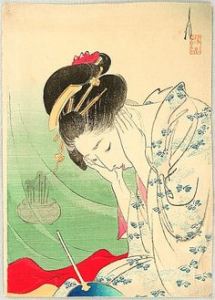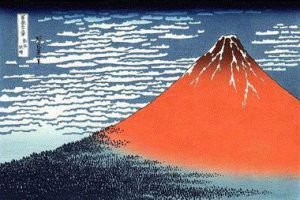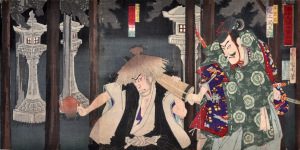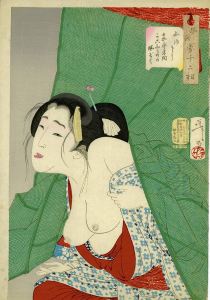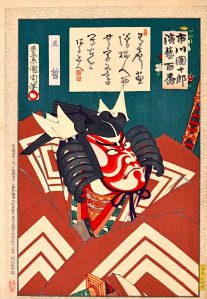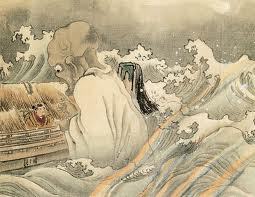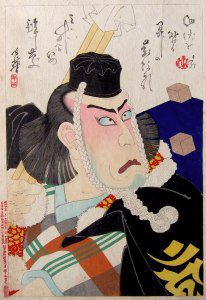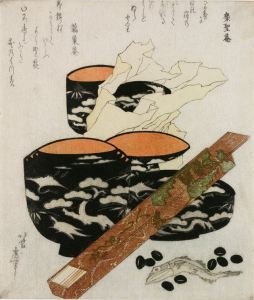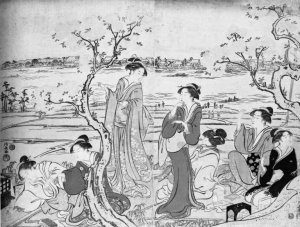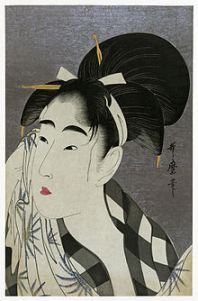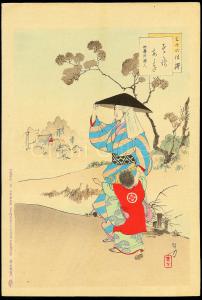Art of Japan and the Intriguing and Mysterious World of Ukiyo-e
Lee Jay Walker
Modern Tokyo Times
The amazing aspect of ukiyo-e is that nothing is hidden therefore you can witness stunning landscapes, the world of sinister ghosts, elegant fashion, beautiful ladies, murders, military ventures, holy religious leaders, strong images of sexuality where nothing is deemed beyond the pale, and then return to aspects of culture and amazing images of Mount Fuji. Also, the spirit of ukiyo-e is alive and kicking in new creative forms like manga and fresh Japanese authors who desire to open-up a new world.
Asai Ryoi commented in his novel, Tales of the Floating World (Ukiyo-monogatari), in 1661 that “Living only for the moment, savoring the moon, the snow, the cherry blossoms and the maple leaves, singing songs, loving sake, women and poetry, letting oneself drift, buoyant and carefree, like a gourd carried along with the river current.” This definition certainly applies to many ukiyo-e artists but like all art forms you have a hidden depth that is often neglected. On top of this, the meaning of images isn’t always transcended from culture to culture and the same also applies to the written word. Similarly, for some artists they were constrained by monetary mechanisms and other factors related to various schools of thought.
The original meaning of ukiyo was based on pessimism. This reality could be felt within aspects of Buddhism and aspects of stratification in old Japan. Karma may have many angles but for the masses it was often viewed alongside pessimism and related to past deeds. However, by the seventeenth century the word had been transformed and now became linked to stylish pleasure, where the soul was free from the burden of “a higher being.”
Dieter Wanczura comments: “The first ukiyo-e was produced in black and white in the seventeenth century. There was however a demand for color and the first colored prints were produced by adding coloring to the finished b/w print with a brush. But that was too expensive and time-consuming. Okomura Masanobu and Suzuki Harunobu are said to have been the first to introduce multi-color prints by using more than one block – one block for each different color.”
He continues by stating, “Ukiyo-e during its time was not considered as fine art but rather as commercial art. These woodblock prints were largely commissioned by the Kabuki and Noh-Theaters and by actors as a form of advertising. It was not before the twentieth century that the Japanese began regarding Japanese woodblock prints as an art form worth collecting. The Europeans, mainly the Dutch and the French, discovered the Japanese prints and their artistic value at the end of the nineteenth century, when large numbers of ukiyo-e were imported to Europe.”
Many international artists fell in love with aspects of ukiyo-e and the partial list includes Paul Gauguin, Vincent van Gogh, Claude Monet, Pierre-Auguste Renoir, Henri de Toulouse-Lautrec, Félix Bracquemond, Mary Cassatt, and many more flamboyant artists. Of course, like all meetings of different thought patterns and styles, the same applies the other way because Dutch and other international artists also impacted on some ukiyo-e artists. This noticeably applies to the later stages of the Edo era and the revolutionary period of the Meiji Restoration that took place in 1868. Therefore, while nations in this period had vague notions of “the other,” in the field of art barriers were being broken that would strengthen both sides.
Ukiyo-e was constantly evolving and Meiji ukiyo-e is often overlooked. However, some of the greatest artists of this art form were based in this period of history. This notably applies to Chikanobu, Kunichika, Kyosai, Ogata Gekko, and Yoshitoshi. Of course, individuals like Kyosai and Chikanobu were born firmly within the Edo period. Yet while Kyosai belonged to both worlds, the life of Chikanobu is best summed up in the Meiji period.
The Japan Ukiyo-e Museum in Matsumoto, Nagano prefecture, is a great place to visit if you reside in Japan – or if you are a tourist to this fascinating nation. On there website it is stated: “The average citizen’s mood of Edo period (1603-1867) was an extremely buoyant and joyful one –not the transitory, heavy atmosphere characteristic of the troubled middle age. The word “ukiyo-e” means “the picture of buoyant world” and incorporates in its meaning the common man’s daily pleasures, such as Kabuki plays, Geisha houses, and so on. The forerunner of Edo period prints was simple drawings that gradually developed into a wood-block, thus satisfying the growth of the demand.”
However, the Edo period is too distant to view with complete nostalgia because many evil deeds were happening throughout the world in this period. Therefore, beautiful gardens, stunning architecture, Christian cathedrals, Buddhist temples, and Islamic mosques, don’t tell us anything. After all, many slaves built the finest monuments that grace this earth. Also, some religious buildings were designed to highlight conquest and domination.
Even today the vast majority of individuals don’t fully understand the complexity of ukiyo-e and the areas that artists delved in. The image of Hokusai is mainly based on images from the Thirty-six Views of Mount Fuji and other stunning landscape images. Yet the other Hokusai is the creator of The Dream of the Fisherman’s Wife where a young lady is being sexually touched by a grown octopus and a young octopus. In other words, many mysterious angles are still being glossed over and marginalized in order to focus on versions of ukiyo-e that suit the respective individual.
In another article I state “Ukiyo-e expresses the richness of Japanese culture, nature, history, mythology, theatre, stunning landscapes, and highlights the importance of entertainment and other areas. Also, ukiyo-e shows vivid images of sexuality because some shunga is extremely explicit, even by the standards of today in liberal nations. This reality is what makes ukiyo-e so powerful because it relates to both reality and a world of mythology and ghosts.”
Turning back to Hokusai then in many ways this aspect of his art sums up the beauty of ukiyo-e because you have so many forces and factors behind the end product. Therefore, ukiyo-e expresses and focuses on an abundance of topics, issues, cultural aspects, the hidden world – and the mundane. Indeed, this is the heart of ukiyo-e and its power.
http://www.ukiyo-e.co.jp/jum-e/index.html
The Japan Ukiyo-e Museum: 2206-1, Shimadachi, Matsumoto, 390-0852, JAPAN.
Open: 10:00 a.m.—5:00 p.m.
Closed on Monday
http://welcome.city.matsumoto.nagano.jp/contents03+index.id+7.htm
Please visit http://toshidama.wordpress.com for more information about ukiyo-e
Please visit http://toshidama-japanese-prints.com/ – On this site you will see a wonderful selection of Japanese woodblock prints for sale. Ukiyo-e (the Japanese name for woodblock prints of the 18th and 19th centuries) are beautiful, collectible and a sound financial investment.
http://welcome.city.matsumoto.nagano.jp/
Modern Tokyo News is part of the Modern Tokyo Times group
http://moderntokyotimes.com Modern Tokyo Times – International News and Japan News
http://sawandjay.com Modern Tokyo Times – Fashion
http://moderntokyonews.com Modern Tokyo News – Tokyo News and International News
http://global-security-news.com Global Security News – Geopolitics and Terrorism
PLEASE JOIN ON TWITTER
https://twitter.com/MTT_News Modern Tokyo Times
PLEASE JOIN ON FACEBOOK
